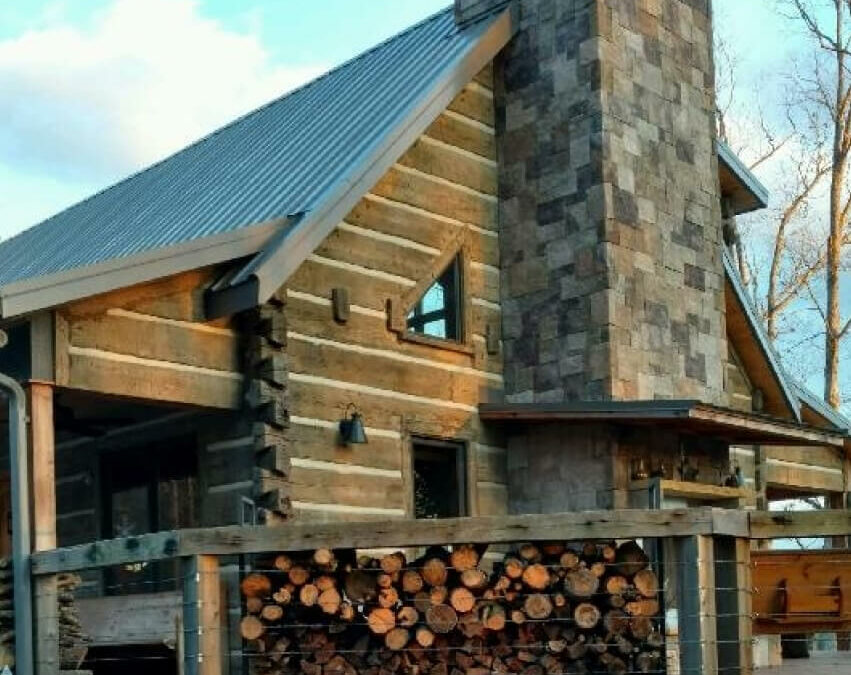Choosing the right siding for your log house is an important decision that can greatly impact the overall look and durability of your home. With so many options available, it can be overwhelming to know where to start. In this article, we will discuss the different log house siding options, their key characteristics, the materials used, installation and maintenance considerations, as well as cost considerations. By the end, you will have a better understanding of the choices available to you and be able to make an informed decision that suits your needs and preferences.
Understanding Log House Siding
The importance of choosing the right siding for your log house cannot be overstated. Not only does it serve as the outer protective layer of your home, but it also contributes significantly to its aesthetic appeal. The siding you choose should complement the natural beauty of the logs, while also providing durability and weather resistance. Additionally, it should reflect your personal style and the overall architectural design of your home.
The Importance of Choosing the Right Siding
When it comes to log house siding, making the right choice is crucial. The siding not only protects the logs from moisture, pests, and UV damage but also acts as an insulator, keeping your home comfortable and energy efficient. It also plays a significant role in enhancing the curb appeal and resale value of your property. Therefore, taking the time to research and understand your options is essential before making a decision.
Key Characteristics of Log House Siding
Log house siding comes in various styles and materials. Each type has its own unique characteristics that affect its appearance, maintenance requirements, and longevity. Understanding the key characteristics of different log house siding options will help you determine which ones best suit your preferences and needs. Let’s explore the different types of log house siding available.
Types of Log House Siding
There are three main types of log house siding: full log siding, half log siding, and quarter log siding. Each type offers a distinct look and feel, allowing homeowners to achieve the desired aesthetic for their log homes. Let’s take a closer look at each type:
Full Log Siding
Full log siding is a popular choice for those who want to showcase the natural beauty of the logs. It involves using whole logs that are flattened on one side and attached directly to the exterior walls of the house. The result is a visually stunning facade that resembles a traditional log cabin. Full log siding provides excellent insulation and requires minimal maintenance, making it a durable and long-lasting option.
Half Log Siding
Half log siding offers a compromise between the rustic appearance of full log siding and the convenience of traditional siding. It involves attaching half logs to the exterior walls of the house, creating the illusion of full logs. Half log siding provides a visually appealing log cabin look while offering ease of installation and maintenance. It is a popular choice for homeowners who want the charm of a log home without the additional expenses and maintenance associated with full log siding.
Quarter Log Siding
Quarter log siding is a more affordable option that offers a similar aesthetic to full and half log siding. It involves using quarter logs that are attached to the exterior walls, creating the appearance of logs from a distance. This type of siding provides a rustic, log cabin look while being lighter and easier to install than full or half log siding. It is a great choice for those on a budget or those who prefer a more subtle log house appearance.
Materials Used in Log House Siding
When it comes to log house siding, there are two main categories of materials: wood species and synthetic materials. Both offer unique benefits and considerations. Let’s explore each category:
Wood Species for Log Siding
Wood species such as cedar, pine, and cypress are popular choices for log house siding due to their natural beauty, durability, and resistance to decay. Cedar, in particular, is highly regarded for its insect resistance and longevity. However, it’s essential to choose a wood species that is suitable for your climate to ensure longevity and minimize maintenance requirements.
Synthetic Materials for Log Siding
Synthetic log house siding materials, such as fiber cement and vinyl, offer a low-maintenance and cost-effective alternative to wood siding. These materials are designed to resemble the look of real logs while providing increased durability and resistance to moisture, insects, and UV damage. Synthetic materials also offer greater flexibility in terms of color options and can be a suitable choice for those seeking a more modern or contemporary log house appearance.
Installation and Maintenance of Log House Siding
When it comes to log house siding, installation and maintenance play vital roles in ensuring its longevity and performance. Let’s explore some important considerations:
Professional vs DIY Installation
Log house siding installation requires a certain level of skill and expertise. While some homeowners may have the necessary experience to undertake the installation themselves, hiring a professional can ensure the job is done correctly and efficiently. Professionals have the knowledge and tools to handle the unique challenges associated with log house siding installation, ultimately saving you time and potential headaches. However, if you have the necessary skills and are confident in your abilities, DIY installation can be a rewarding and cost-saving option.
Regular Maintenance for Longevity
Proper and regular maintenance is essential to prolong the life of your log house siding. This includes cleaning, inspecting for damage, and applying protective finishes as necessary. Additionally, keeping the surrounding landscaping well-maintained can help prevent moisture damage and pest infestations. Regular maintenance not only keeps your log house siding looking its best but also helps prevent costly repairs and replacements down the line.
Cost Considerations for Log House Siding
Cost is an important factor to consider when selecting log house siding. Let’s explore the different cost considerations:
Initial Investment and Installation Costs
The initial cost of log house siding varies depending on the type of siding, materials used, and the size of your home. Full log siding tends to be the most expensive option due to the cost of the logs and the labor-intensive installation process. Half log siding is generally less expensive, while quarter log siding falls on the lower end of the cost spectrum. Synthetic materials offer a more budget-friendly option, with vinyl siding being the most affordable. It’s essential to consider both the upfront investment and the long-term value when making a decision.
Long-term Maintenance Costs
Maintenance costs are an ongoing consideration for log house siding. Wood species require regular maintenance, including staining and sealing to protect against weathering and decay. Synthetic materials generally have lower maintenance requirements, reducing long-term costs. It’s important to factor in the cost of maintenance when budgeting for log house siding to ensure you can properly care for your investment over time.
In conclusion, choosing the right log house siding is essential for both the appearance and durability of your home. Understanding the different options available, including the various types of log house siding, the materials used, and the installation and maintenance considerations, will help you make an informed decision. Additionally, considering the cost implications of log house siding will enable you to budget effectively and choose a solution that meets both your aesthetic preferences and financial capabilities. With proper research and careful consideration, you can achieve a log house siding option that surpasses your expectations and enhances the overall beauty and value of your log home.
Discover the Smart Choice with Smart Logs of the Carolinas
Ready to elevate your West Jefferson log home with siding that combines the natural beauty of wood with unparalleled durability and low maintenance? Smart Logs of the Carolinas offers concrete log siding that is not only environmentally friendly and easy to install but also cost-effective and energy-efficient. Our concrete logs are designed to resist warping, settling, and rotting, and they require no harmful pesticides, making them a smart investment for your dream home. Whether you’re building anew or upgrading an existing structure, our competitively priced, fire-resistant logs are the perfect choice. To learn more about how Smart Logs of the Carolinas can help preserve natural resources while providing superior protection against insects, weather, and time, Contact Us! today at 828.781.2015 or visit us at PO Box 6080, Hickory, NC 28603. You can also reach out via email at info@mysmartlogs.com. Transform your log home with siding that costs less to insure and brings enduring character and charm.

